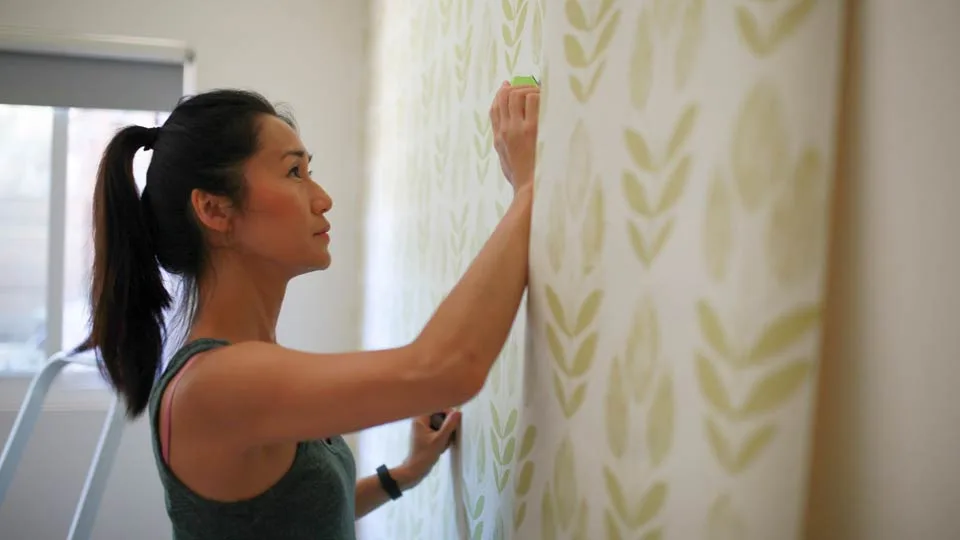If you’re one of those DIY enthusiasts, you’re not alone! There’s something immensely satisfying about transforming your home with your own hands. Whether you’re a seasoned DIY pro or just starting out, there are plenty of easy projects to unleash your creativity and elevate your living space.
In this article, we’ll explore a range of DIY ideas and tutorials that will inspire you to tackle home improvement projects. From simple crafts to home renovations, you’ll discover how DIY can be a fun and rewarding endeavor. So get ready to roll up your sleeves, grab your tools, and let’s dive into the world of do-it-yourself projects!
Key Takeaways:
- DIY projects allow you to personalize your space and save money.
- From wallpapering a wall to building a raised garden bed, there’s a project for every skill level.
- Backsplashes and vinyl flooring can add style and functionality to your kitchen.
- DIY is all about learning, expressing yourself, and adding a personal touch to your home.
- Unleash your creativity and start transforming your space with these easy DIY projects!
Wallpaper a Wall and Make Compost
Are you looking to add a pop of color, pattern, and texture to your room? Wallpapering a wall is a fantastic way to achieve that and transform your space. With today’s prepasted papers, the process is easier than ever.
Before you begin, make sure to measure your walls accurately to calculate the square footage needed. This will ensure that you purchase the right amount of wallpaper and avoid any unnecessary waste. Once you have your wallpaper and tools ready, follow these steps to wallpaper your wall:
- Prepare the wall by cleaning it and removing any old wallpaper or loose paint.
- Apply primer to create a smooth surface for the wallpaper to adhere to.
- Measure and cut the wallpaper according to the height of your wall, leaving a few extra inches at the top and bottom for adjustment.
- Apply the wallpaper adhesive or activate the pre-applied paste according to the manufacturer’s instructions.
- Carefully position the first strip of wallpaper at the top of the wall, aligning it with a plumb line.
- Smooth out any air bubbles or wrinkles using a wallpaper smoother or a clean, damp sponge.
- Trim off any excess wallpaper at the top and bottom using a sharp utility knife.
- Continue applying the remaining strips of wallpaper, aligning the patterns as necessary.
- Once you’ve finished, use a seam roller to secure the edges and ensure a smooth, seamless look.
- Allow the wallpaper to dry completely before moving or rearranging any furniture in the room.
Now that you’ve added a stylish touch to your walls, let’s talk about another project that can help you make a positive impact on the environment and your garden: composting.
“Composting is a fantastic way to divert waste from landfills and create nutrient-rich soil for your plants.”
Composting is the process of decomposing organic materials, such as food scraps, yard waste, and coffee grounds, into a nutrient-rich soil amendment, also known as compost. By composting, you’re not only reducing the amount of waste sent to landfills but also improving the quality of your soil, enriching it with essential nutrients and beneficial microorganisms.
To start composting, you’ll need to create a composting system in your backyard. Here’s how:
- Choose a suitable location for your compost bin or pile. Ideally, it should be well-drained and easily accessible for adding materials and turning the compost.
- Use a mix of “browns” and “greens” for the compost. Browns include materials like dry leaves, shredded newspaper, and cardboard, while greens include food scraps, grass clippings, and fresh plant trimmings.
- Add the materials to your compost bin or pile in layers, starting with a layer of browns followed by a layer of greens. Make sure to sprinkle water over each layer to maintain moisture.
- Turn the compost regularly using a garden fork or compost turning tool to provide oxygen and speed up the decomposition process.
- Avoid adding meat, dairy products, oily foods, and pet waste to your compost, as they can attract pests or introduce harmful pathogens.
- Monitor the moisture level of your compost. It should be similar to a damp sponge, not too dry or too wet.
- In a few months to a year, depending on the materials and conditions, your compost will transform into crumbly, dark brown soil-like material with a pleasant earthy smell.
- Use the finished compost to enrich your garden soil, improve plant health, and reduce the need for chemical fertilizers.
By incorporating wallpapering and composting into your DIY projects, you can not only beautify your space but also contribute to a greener environment. So get creative with your walls and start composting for a more sustainable and vibrant home.
| Benefits of Wallpapering a Wall | Benefits of Composting |
|---|---|
| Adds color, pattern, and texture to your room | Reduces waste sent to landfills |
| Easy to apply with prepasted papers | Creates nutrient-rich soil amendment |
| Cost-effective way to transform your space | Enriches soil with essential nutrients |
| Allows for self-expression and creativity | Improves plant health and reduces chemical fertilizer use |
Tile a Backsplash and Install Vinyl Flooring
When it comes to kitchen renovations, two key elements that can greatly enhance the look and functionality of your space are a tile backsplash and vinyl flooring. Not only do these elements add visual appeal, but they also provide practical benefits. In this section, we’ll guide you through the process of tile installation for your backsplash and the installation of vinyl flooring in your desired area.
Tile a Backsplash
A backsplash serves as a protective barrier against stains and splatters while also adding a decorative touch to your kitchen. With a wide range of colors, sizes, and shapes available, you can choose a style that complements your existing decor and personal taste.
Here’s a step-by-step guide to help you tile your own backsplash:
- Prepare the surface: Clean the wall thoroughly and ensure it is free from any debris or dirt. Apply a primer to promote better adherence of the tiles.
- Measure and plan: Measure the area where the backsplash will be installed. Calculate the amount of tile needed, accounting for any cuts or wastage.
- Select your tiles: Choose the type of tiles you want for the backsplash. Ceramic, porcelain, and glass tiles are popular choices for kitchen backsplashes.
- Prepare the tiles: If necessary, cut the tiles to the desired size and shape using a tile cutter. Be sure to wear safety goggles and follow the manufacturer’s instructions.
- Apply the adhesive: Using a notched trowel, spread the adhesive evenly on the wall in small sections.
- Install the tiles: Place the tiles onto the adhesive, pressing them firmly to ensure good adhesion. Use tile spacers to maintain consistent spacing between the tiles.
- Grout the tiles: Once the adhesive has dried, remove the spacers and apply grout to the gaps between the tiles. Wipe off any excess grout with a damp sponge.
- Seal the grout: After the grout has cured, apply a grout sealer to protect it from stains and make it easier to clean.
By following these steps, you can achieve a professional-looking tile backsplash that adds both style and functionality to your kitchen.
Install Vinyl Flooring
Vinyl flooring is a popular choice for rooms with high moisture levels, such as kitchens and bathrooms. It is durable, easy to maintain, and comes in various forms such as rolls, tiles, and planks, allowing you to find the perfect fit for your space.
Here’s a step-by-step guide to help you install vinyl flooring:
- Prepare the subfloor: Ensure the subfloor is clean, level, and free from any imperfections. Repair any damages and remove any old flooring.
- Measure and plan: Measure the area where you want to install the vinyl flooring. Calculate the amount of flooring needed, accounting for any cuts or wastage.
- Choose your vinyl flooring: Select the type of vinyl flooring that suits your style and requirements. Consider factors such as color, texture, and installation method.
- Prepare the vinyl flooring: If necessary, cut the vinyl flooring to fit the dimensions of your space. Leave a small gap around the edges to allow for expansion.
- Apply the adhesive: Apply a suitable vinyl flooring adhesive to the subfloor, following the manufacturer’s instructions.
- Install the vinyl flooring: Carefully lay the vinyl flooring onto the adhesive, ensuring it is aligned and pressed firmly to eliminate air bubbles.
- Trim and finish: Use a utility knife to trim any excess vinyl and install trim pieces, such as baseboards or transition strips, to create a finished look.
By following these steps, you can successfully install vinyl flooring that not only adds beauty to your space but also withstands the rigors of everyday life.
Now that you have learned how to tile a backsplash and install vinyl flooring, you can add a personal touch to your kitchen and create a stunning and functional space. Take your time, follow the instructions carefully, and enjoy the rewarding process of DIY home renovation.
Conclusion
With these easy DIY projects, you can unleash your creativity and tackle home improvement tasks to add a personal touch to your space. Whether you’re a seasoned DIY enthusiast or just getting started, there are projects for every skill level.
From painting your front door to building a shelf, these creative ideas will help you transform your home without breaking the bank. DIY is not only about saving money, but also about learning new skills and expressing yourself through your home decor.
So grab your tools, get inspired, and start your DIY renovation journey today. With these fun and rewarding projects, you can make your home truly your own. Whether it’s a small DIY home decor project or a larger renovation endeavor, DIY projects allow you to create a space that reflects your unique style and personality.



